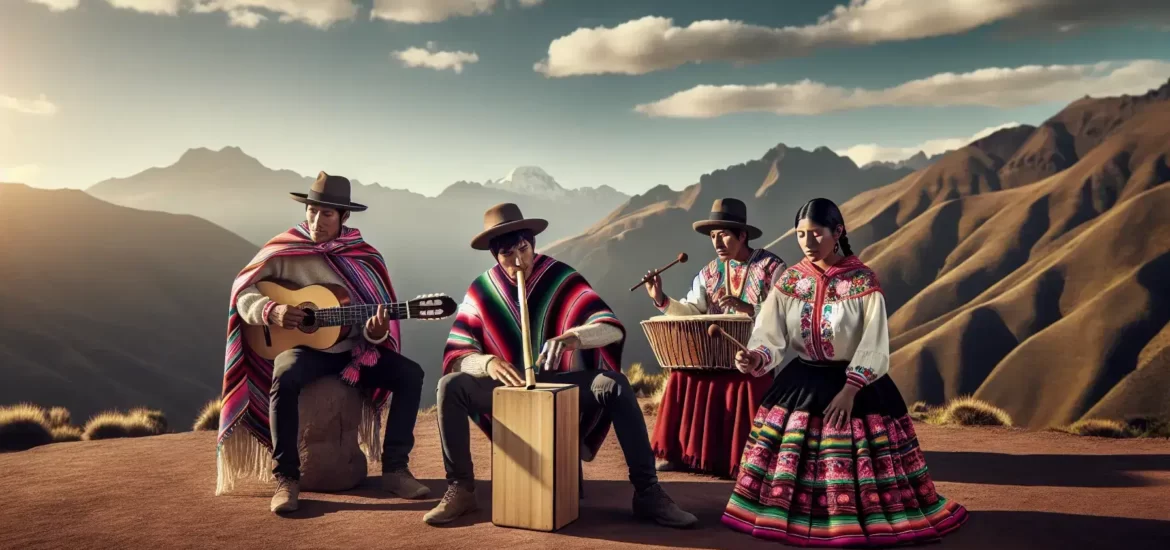Peru is a country celebrated not only for its stunning landscapes, rich traditions, and delicious gastronomy but also for its incredible cultural and racial diversity. This unique blend gives rise to captivating rhythms and melodies that resonate worldwide.
If you are a music enthusiast, join us on an exciting journey to explore how Peruvians create these enchanting tunes and understand their cultural significance. Experience the vibrant sounds of Peru and discover the heart and soul behind its music!
If you’re up to know the variety of musical instruments in Peru, join us thoroughly. We’ll give you a peek at what each instrument sounds like, so don’t worry. Let’s go.
Percussion Instruments
Cajon
This percussion instrument called “box” in english has African origin. African slaves came to Peru because of the Spanish colonization, bringing their own culture to the Andean country. Slavs used to use this box to sing along after celebrating long and exhausting work days.
The cajón has a rich history in Peruvian culture that goes back to the 14th century; however, it became popular around the 19th century. This wooden instrument is rectangular and features a hole on one side. It plays a key role in Afro-Peruvian folklore and is essential to Peruvian Creole music.
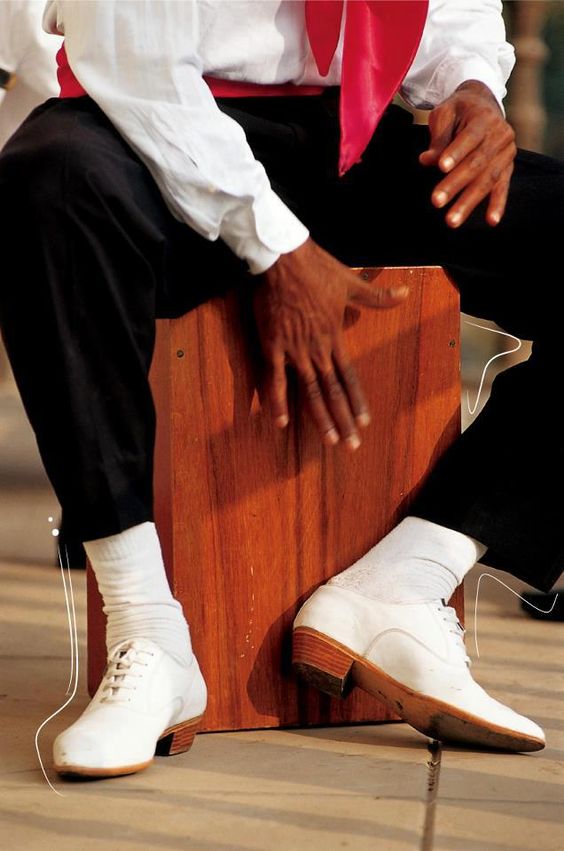
Its popularity soared when it joined the world of modern jazz, Afro-Caribbean rhythms, and flamenco. Rhythm and percussion joined in an explosion of joyful sounds, where people dance to the sound of cajon.
Given its significance, the Peruvian Government honored the cajón as a Cultural Heritage of the Nation. We proudly celebrate “The Day of the Peruvian Cajón” every August 2nd to recognize its important place in our culture.
How does it Sound?
The following audio comes from Manos Morenas , a Peruvian percussion band, enjoy!
Cajita
The cajita, or “Cajita Rítmica,” is another instrument with African influences and great cultural importance. It started as a wooden donation box in churches across Peru. With a bit of creativity, people began using a stick to tap the sides, top, and inside of the box while opening and closing the lid.
This fun transformation made this little box an essential part of the Afro-Peruvian music scene, as it has Spanish and African roots. Adding to its lively rhythmic traditions, that’s why in 2007, Peru recognized the cajita as a National Heritage instrument. This recognition highlights its role as a symbol of Afro-Peruvian identity and culture.
People celebrate the cajita not only for its unique sounds but also for what it represents. This charming little box shows how everyday objects can become vital to a musical tradition, beautifully blending simplicity with rich rhythms.
How does it Sound?
The following excerpt is also thanks to Manos Morenas.
Quijada
This instrument shows Peruvian creativity and cleverness, as we use a part of a dead animal to create music. “Quijada” means jawbone, it’s an instrument often used in carnivals and religious festivals. The “quijada” is another instrument with African roots that brings joy to many rhythms, especially those inspired by Afro-descendant music, like Creole tunes.
It creates two distinct sounds: When a musician strikes the side, it produces one sound. Scraping along the teeth with a wooden stick creates another exciting sound. To prepare the jawbone, musicians carefully boil and dry the lower jaw of a donkey or horse.

Sometimes, makers even put it in an ant nest to help remove residues and loosen the teeth. This technique accentuates the rattling sound that identifies this instrument. In addition to its use at carnivals and festivals, the jawbone is used in Afro-American rhythms such as Afro-Peruvian music from Peru’s central coast to southern areas, combining music and dance.
Other Latin America and Africa use this peculiar instrument too. Musicians skillfully strike the end of the jawbone with their palms or closed hands, making the teeth vibrate and creating beautiful music. This rich cultural heritage truly showcases the creativity and diversity of Peruvian music styles!
How does it Sound?
Give it a listen to the next excerpt.
Wind Instruments
Quena
The quena is a beautiful wind instrument with a rich history that began in the Inca Empire. Starting from Peru and expanding through South American Andean countries, many consider it the oldest wind instrument created by humans, dating back to pre-Columbian times.
The beautiful strains of the quena flooded the territory of the Inca Empire. Today, it has a special place in Peruvians’ hearts, especially in the country’s Andean regions. Its seven holes produce lovely tunes that bring many folklore styles to life.
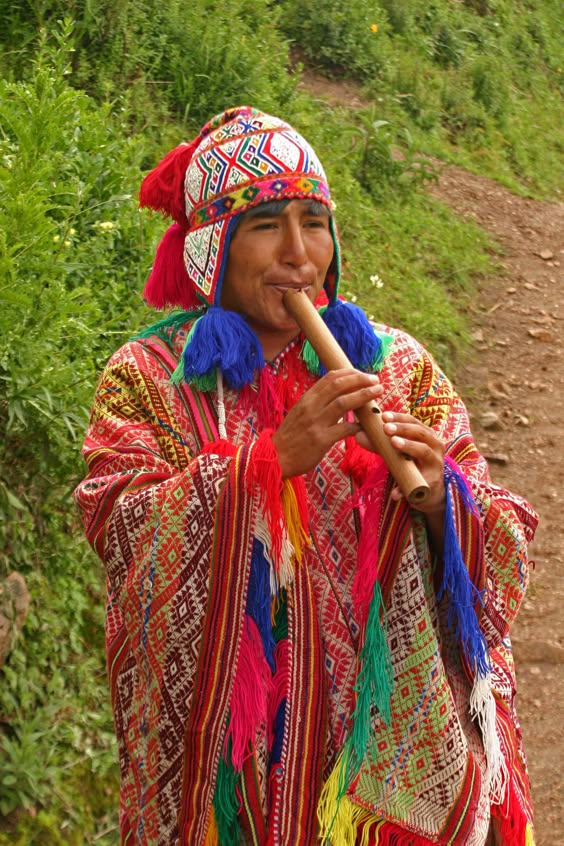
The quena is often made from cane, wood, or bone, showcasing the craftsmanship of the region. We can see the earliest quenas in Moche and Nasca ceramics from northern and central Peru. These artifacts reveal the rich history of this instrument, including sicus (panpipes) made from ceramics and animal bones.
Today, the quena plays an important role in folk ensembles and Indigenous Andean communities highly value it. It is a popular choice at local and national Andean music festivals.
How does it Sound?
This excerpt is thanks to singer Omar Ibarra.
Zampoña
The zampoña, is a wind instrument used in traditional Andean music of the highlands of Peru. It has roots in the Wari culture, dating back to the 5th century. It remains prevalent in southern Peru, particularly in Ayacucho, Cusco, Apurímac, and Puno.
This instrument consists of 13 tubes of varying diameters and lengths, allowing for a rich variety of sounds. Each region in the Andes—spanning Peru, Argentina, Bolivia, Chile, Ecuador, and Colombia—has developed its unique version of the zampoña.
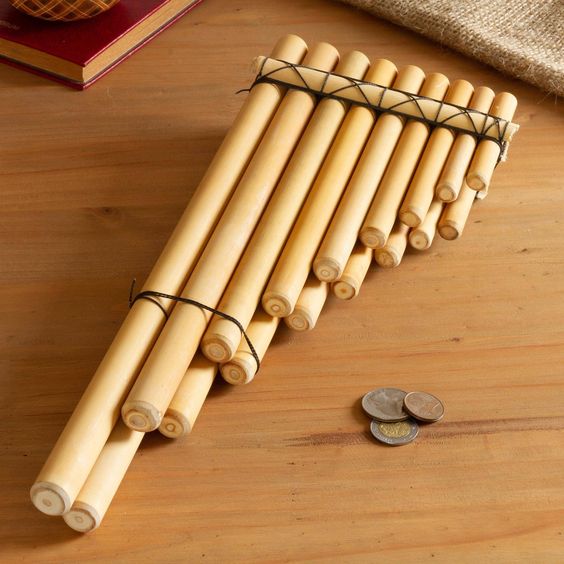
Originally known as “siku” or “sikuri”, the zampoña was made from stone and clay, with some historical instances of construction using animal and human bones. By the 7th century, cane became the primary material. The zampoña is arranged in vertical rows, typically with one row called the ira and the other, consisting of seven tubes, known as the arka.
How does it Sound?
The following excerpt is from a Peruvian traditional music local band.
Stringed Instruments
Charango
The charango is one of the most unique string instruments in Peru. This small, guitar-like instrument is loved for its bright and melodic sound. Traditionally, people made the charango from armadillo shells, but today, it is usually made from wood.
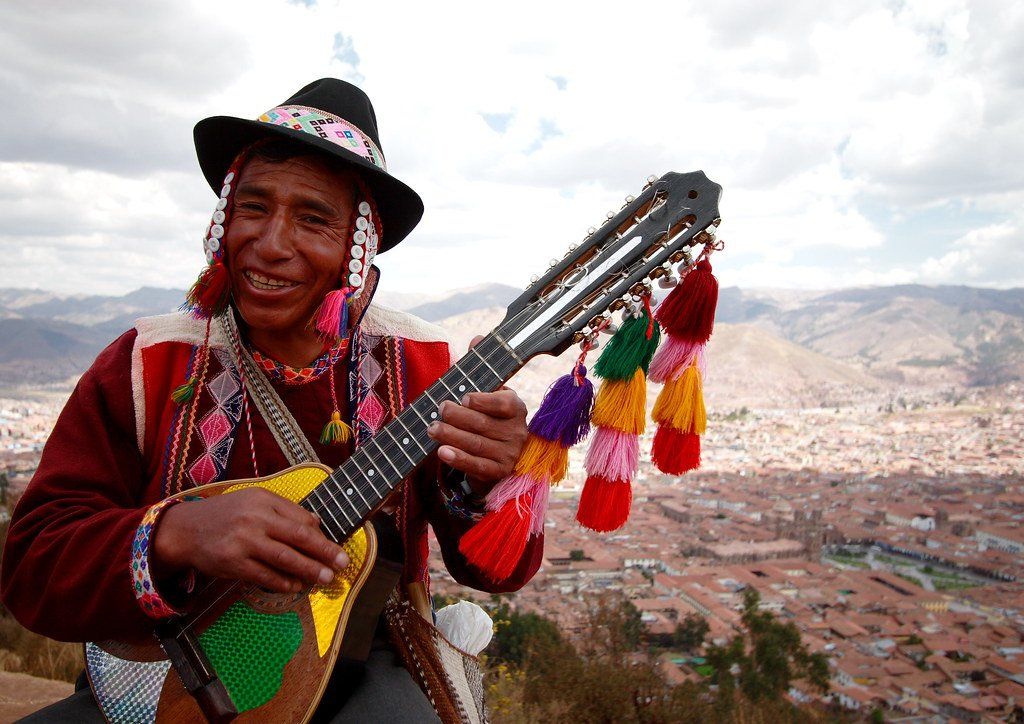
It has European influences like the guitar, but nowadays the charango is an important part of Andean culture. You can often hear it during fiestas and folk dances like the huayno. Its cheerful music brings joy and celebration to these events. You can see the charango is also used in many musical sounds and styles, ranging from traditional folk to modern fusion.
How does it Sound?
Give it a listen to this song.
Other Instruments
Pututu
The Pututu, or pututo, is a fascinating large marine gastropod found along the eastern Pacific, from California to Peru. Due to its meat and size, people value the conch shells. However, due to overfishing, its numbers have declined, leading to important protective measures.
Historically, the conch shells of this conch were transformed into wind instruments, especially the pututu. These instruments played a key role in ancient Andean civilizations, like the Chavín and Inca cultures. The pututu was used for communication and ceremonies.
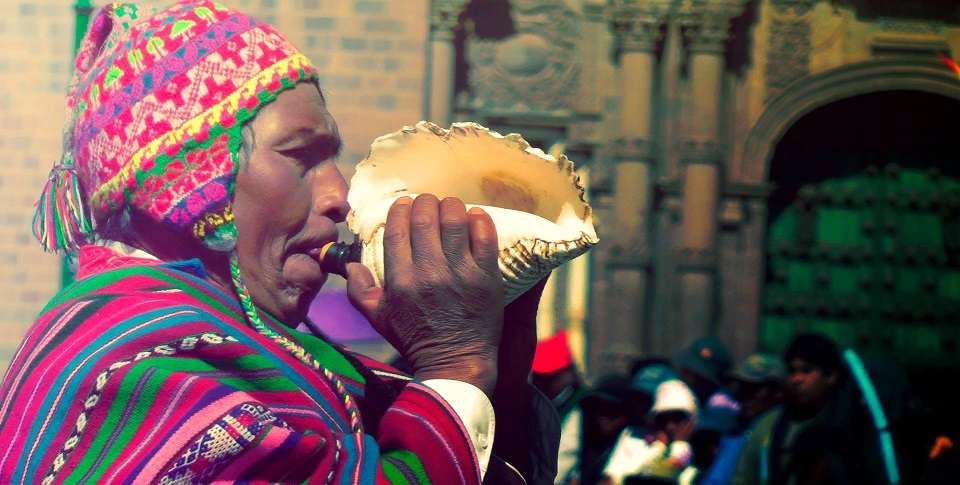
It produced a deep sound that could travel long distances, often marking the arrival of important guests or significant events. Archaeological findings, such as those in Caral, show how vital the pututu was in rituals. Some people believe that it connects people with the cosmos and the divine.
Making a pututu involves carefully selecting conch shells and cleaning and drilling them to create beautiful sounds. This powerful resonance met practical needs and held spiritual meaning. It reflected Peru’s rich cultural heritage.
How does it Sound?
The following excerpt will give you an idea of what the pututo is like
We can affirm that Peru is also diverse in its instruments and music genres. We encourage you to listen to our music, and if you love music as much as we do, learn how to play one of these instruments! Peru and its rich culture are waiting for you.
Remember, in Peru, your best option is Viagens Machu Picchu. We‘re a reputable travel agency that operates in Peru. Contact our experts to learn more about Peru, and start making your dreams come true now!
Viagens Machu Picchu, journeys that inspire, moments that last.

